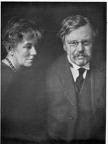
One of the latter, it seems, is Mr Fred Preuss.
I do not think he is in the same category as the fraudulent televangelist phoney and billionaire Jimmy Swaggart (pictured left) and his ilk.
However, he does seem to be just about as anti-Catholic as these Protestant Fundamentalist money-makers.
He seems to be ideologically-driven - even hard-wired - to hate the Catholic Church. No amount of information, evidence or fact will change his blinkered, ignorant bigotry against the Catholic Church.
So there is little point in pretending that he will take any cognizance of what I write below.
Nevertheless, I write it for the benefit of others, more open-minded, and to demonstrate that the Catholic Church can defend itself from all false charges.
I list his errors below, which were presented to me in a recent correspondence, and I rebut them
seriatim.
1. Pope Pius IX did not have to deal with Fascism.Wrong. Fascism arose from the
Fasci movements of the 19th century whose members were the very anti-clericals who had overthrown the Papal States and imprisoned Pope Pius IX.
The word
fascio came, in modern Italian political usage, to mean group, union, band or league. It was first used in this sense in the 1870s by groups of revolutionaries and socialists in Sicily to describe themselves. This made them a favourite with nationalists and anti-Catholic revolutionaries. The
fasci they formed were scattered over Italy, and it was to one of these groups that Benito Mussolini belonged. They were war-mongers who wanted to force Italy into World War I. For example, on 18 August 1914, Alceste de Ambris, speaking at the Milanese Syndical Union, a labour union grouping, ferociously attacked neutrality and equated joining the war with the French Revolution. The Fascist movement, eventually united in 1915, came from Socialist revolutionary, labour union roots and was bitterly hostile to the Catholic Church.
 Fascism and Liberty crows this false motto.
Fascism and Liberty crows this false motto.
The Fasces - a Roman symbol stolen by Fascism- a bundle of sticks and an axe originally carried by the Roman lictors to symbolise that what may be weak separately is strong tied together. Fascism began as a Socialist revolutionary, anti-Catholic, labour union movement. It was at first supported by many British and American Protestants but condemned by Pope Pius XI in his encyclical letter entitled Non Abbiamo Bisogno.
They were supported by many Anglo-American Protestants and secularists purely because they had opposed the Catholic Church and their members had been the "Pope's gaolers". That changed in 1929 when Mussolini signed a concordat with the Vatican to save his own political skin.
2. The "Communist Manifesto" had been published, but I don't think that any serious political forces were communist in the lifetime of Pius IX.Wrong. Fred has plainly never heard of the Paris Commune, the Communards of 1870, nor the numerous other groups who took their inspiration from Marx and other 19th century Communists.
3. If your church has contributed so much to literacy, why was Puritan Massachusetts literate earlier than Catholic Spain, Portugal or Italy?Wrong. Fred now descends into pure farce at this point. Anyone who believes this nonsense really does have a serious problem. Firstly, upon what objective evidence or statistics does he base his case? Certainly none are provided!
In reality, the history of the Catholic Church has seen one of the greatest contributions to education ever made by a single body. It is simply a commonplace fact of history that whole religious orders and communities of the Catholic Church, since the very beginning of Christianity, have been committed to educating the poor and not only in matters of Faith and culture but also for a trade or profession. Conversely, it is another simple fact of history that Protestantism destroyed these free education services for the poor and replaced them with schools for the new, rich, money-grabbing and selfish elite.
Fred, go and read
A History of the Protestant Reformation in England and Ireland to see what damage was wrought by Protestants and Protestantism. It crushed the poor in all areas of life. And by the way - the book was written by William Cobbett who was a Protestant himself!
Read it - if you dare to have your prejudices demolished.
As for Massachusetts, so steeped in ignorance and superstition was that colony that it gave the world the Salem witch trials and, in 1625, the first legalization of the slave trade in all of the Americas. Puritan clergyman, Cotton Mather, even referred to the black races as "Adam's degenerate seed" saying that slavery was their just due, accordingly!
 Puritan "literacy": the Salem witch Trials.
Puritan "literacy": the Salem witch Trials.
The appallingly superstitious Salem witch trials which took place between February 1692 and May 1693 in Puritan Massachusetts were a farcical and utterly bigoted set of proceedings with the most tragic consequences. Here a woman is publicly and shamefully stripped to demonstrate the supposed "mark of the Devil" on her body whilst two alleged victims and witnesses dishonestly writhe in false and perjured toils upon the floor. This was what passed for "literacy", religion and law in the bigoted, fanatical Puritan colony.
 Puritan "justice": an innocent woman shamefully hanged.
Puritan "justice": an innocent woman shamefully hanged.
Ann Bellingham Hibbens was shamefully executed as a supposed witch by fanatical, Puritan Massachusetts, despite her brother having been one-time Governor of the colony. Over 150 people were arrested and imprisoned during the Salem witch craze. The two courts convicted twenty-nine people of the capital felony of witchcraft. Nineteen of the accused, fourteen women and five men, were hanged. Puritan "tolerance": a man pressed to death by stones for refusing to plead.
Puritan "tolerance": a man pressed to death by stones for refusing to plead.
Giles Corey was pressed to death under heavy stones for refusing to plead to charges he considered ridiculous and so as to avoid his family losing their farm to the state. So much for Protestant tolerance, liberty of conscience and private judgement!How much literacy was there among the poor, the Negroes and the Indians living in Massachusetts compared with those in Catholic states? Even today the poor of once Protestant nations like the USA are often notoriously badly educated and semi-literate. Even today, many supposedly "literate" American citizens are often woefully ill-educated, ignorant and even semi-literate.
Catholic Jesuits, on the other hand, had taught Indians living in the Paraguayan forests not only to read but to make and play orchestral instruments, to play and sing great choral works, and even to compose themselves works of music, literature, poetry and art. Their musical instruments were so well made that they commanded higher prices in Europe than violins made by Stradivarius and Amati. Yet, a generation or two before, these Indians had been semi-naked tree-dwellers living a brutalised existence worshipping pagan gods and practising human sacrifice and cannibalism.
The Jesuit Reductions in Paraguay
This clip from the film
The Mission of a Jesuit Superior, played by Jeremy Irons, follows his climbing a huge, steep, rushing cataract to re-start their mission to the human-sacrificing Indians in the certain knowledge that he may be crucified and send over the cataract, as his Jesuit brother was, is entirely based upon the truth.
Indeed, the film, if anything, under-states the monumental and astonishing achievement of the Jesuits in teaching the Indians to build a truly free and Christian civilisation. The Jesuits were later treacherously betrayed at the hands of greedy, grubby, venal, anti-Catholic Freemasons like the Marquis de Pombal, then Prime Minister of Portugal and a hater of both the Pope and the Jesuits.
He and his like even forced the Pope to dissolve the whole Jesuit Order in 1773. It is doubtful that the world has ever seen a more heroic company of Christian men than the early Jesuits.
 One of the many churches built, astonishingly, in the middle of the jungle, by the native Guarani Indians, who had been taught by Jesuits in the Reductions. They were destroyed by God-hating secularists.
One of the many churches built, astonishingly, in the middle of the jungle, by the native Guarani Indians, who had been taught by Jesuits in the Reductions. They were destroyed by God-hating secularists.
What Protestant mission has produced anything like such magnificent results?
In the USA today, fully 58% of the population, after leaving school, never again read a book. Fred thinks this is "literacy", apparently.
The ignorance of some Americans has become a by-word in the rest of the world. One regularly sees some dumb-bunnies advertising their ignorance in the public media, some being so astonishingly badly educated as not even to know where the continent of Europe is.
Is this mass literacy? Or the kind of ignorance that even exceeds that of famed Yankee icon, doughnut-chomping Homer Simpson?
But who cares about the facts, eh?
4. Here in the US, we have immigrants from Portugal and Latin America who have trouble writing and reading their own native languages. There were schools, true, but they were for a small minority. Mass literacy was not a achieved until recently in these Catholic countries.Wrong. There are far more immigrants to the US who can read and write better than many a bigoted, red-neck, trailer park dummy. These immigrants can speak not only their own language but also English and other languages. Mass literacy has still not been achieved in America, let alone mass education. A surprising number of Yanks do not read much more besides newspapers and comic books. They are, all too often, deeply ignorant even of their own country, let alone other countries. Fred, for example, demonstrates his own deep ignorance of Latin American history.
 An increasingly common view of "Protestant" America
An increasingly common view of "Protestant" AmericaAs we have demonstrated in this Blog on numerous occasions, ever since the infamous Monroe doctrine, US governments have been intent upon turning Latin America into a US economic colony, crushing its people under successive anti-Catholic tyrannies funded and supported by the US government and delivering them into deep poverty and servitude chiefly for the benefit of Yankee Capitalist exploiters. This system of tyranny and corruption Fred thinks is an example of Catholic government.
Well, folks, it's a point of view - just not a very literate one.
5. Indulgences are given for periods of time, people get out of Purgatory. If you pray for them after they've gone out of Purgatory, it's a waste of time. How does prayer for those who don't need it do anything useful? Again, it's like giving medicine to healthy people.Wrong. Indulgences are no longer given for periods of time and, in any case, they never represented "periods of time" in the next life since there
is no time in the next life. They represented reductions in the stipulated periods of time given by Church courts for doing penance for sins and offences. In that respect they were no different from modern courts who give time off for good behaviour. Indeed, that is precisely where courts got the idea from, Fred, which you might have known if only you were better informed. Penance given by such courts for malefactors and offenders is precisely the origin of the word "Penitentiary" which is now part of the US judicial and penal system.
 Penance simply means making up for your sins and offences to others and to God by sincere sorrow and by trying to repair the harm done. There is no magic about it - every system of justice and fair play requires it.
Penance simply means making up for your sins and offences to others and to God by sincere sorrow and by trying to repair the harm done. There is no magic about it - every system of justice and fair play requires it.No prayer or penance made in the right spirit is ever wasted. Prayer is not material like a bank full of money. Prayer that is directed for the benefit of a person already in heaven is made use of by that same soul, and accepted by God, for the benefit of other souls who need it. A soul in heaven lives in perfect charity and so will always strive to do good for others, especially by prayer. This is what the Catholic Church means by the Communion of Saints. Prayer is a spiritual lifting of the heart and mind to God and the saints and so is beyond time, matter and the purely material. To think of it as a bank of money or a chest of medicine is to miss the point utterly - which, true to form, Fred, is exactly what you do.
Go to the bottom of the class, again, Fred!
6. An anti-aristocratic ideology didn't stop duelling immediately in the USA, but officials in France, people with education and position, were still challenging each other to duels at the conference ending World War I; Americans visiting the conference found this bizarre.Wrong. Whatever ideology has ruled in the USA has not, even today, stopped duelling. Fights over personal honour are fought in the streets of America more frequently now than ever. Some Yanks can be notoriously touchy over their supposed "honour" and are all too willing to fight over it. The fact that such fights are often done by those who think that some other person has slighted them (or, as they often put it, "dissed" them) proves this beyond a peradventure. As I have already pointed out to you, the Catholic Church has always , and still does, condemn this and any other sort of duelling whether in America or anywhere else. That is simply a matter of very clear record - a long stream of statements from the Holy See roundly condemns any form of duelling or honour-fighting, particularly so if any lethal force is likely to be used.
 Gunfight at the OK Corral. Anyone who thinks that Puritan America or anti-aristocratic and democratic America got rid of duelling is plainly living in cloud-cuckoo-land. Duelling flourished in America like almost nowhere else and was a national scandal.
Gunfight at the OK Corral. Anyone who thinks that Puritan America or anti-aristocratic and democratic America got rid of duelling is plainly living in cloud-cuckoo-land. Duelling flourished in America like almost nowhere else and was a national scandal.Americans visiting the Versailles conference after WWI were in no position to condemn France for its duellers - if indeed there really were any - since the practice was still a common feature of life in America, whether in the Wild West or in the seedy streets of her cities. In France, on the other hand, it was illegal. That did not, it must be said, stop atheists, like George Clemenceau, from duelling (for which he was prosecuted and imprisoned for 2 weeks).
However, the real problem Fred has is simply that he cannot comprehend the historical fact that France, save for a brief period under King Charles X in the 1830s, has not been a Catholic country for some 200 years.
Frenchmen still duelling in 1918 - if indeed there were any - would not have had the slightest regard for the teachings of the Roman Catholic Church and would be much more likely to have been Protestant-born atheists like Georges Clemenceau or secularists like the majority of men in public office at that time.
Ridiculously Fred overlooks the fact that the very French politicians who settled the Versailles treaty had, for a large part, been those who had passed the laws at the turn of the century which had suppressed all the Catholic contemplative religious orders in France and exiled their members at the point of a gun.
Not very Catholic, then, hey Freddy?
7. People can certainly think of mid-18th century Spain, Portugal and Italy as Catholic. Compare literacy rates in those places with literacy rates in Protestant England, Scotland, New England and Holland and see what the differences were.Wrong. Yes, let's do that! The Catholic countries win hands down. And that is even given the fact that during the mid-18th century the governments and Prime Ministers of Spain, France, Portugal, the Empire and much of Italy were anti-clerical, anti-papal secularists and/or Freemasons just as the future leaders of the United States were. Moreover, Europe was locked in a series of wars. Nevertheless, religious orders like the Jesuits were able to build an highly successful system of Catholic education for rich and poor alike.
Go and read Cobbett and your whole world outlook will be radically challenged. That's if you dare...
8. As soon as transportation became cheap enough, people started leaving these Catholic places for wealthier Protestant ones by the tens of thousands. A nation that can't feed what it breeds is a failure; a faith that condemns them to overpopulation and ignorance is contemptible.
Wrong. The era of mass emigration was in the 19th century when political revolution was rife across Europe. This was caused almost exclusively by anti-Catholic terrorists and revolutionaries - often supported by Protestant money from America and Britain. Not surprisingly many wished to escape it. Poverty was the result of anti-Catholic wars and revolutions fomented and run by anti-Catholics, revolutionaries and Protestants often with foreign money - in short, the very gangsters you would have us salute and approve.
One of the best-known examples of emigration was from places like Ireland where Roman Catholics were brutally and grotesquely persecuted by Protestant bullies and thugs and a Protestant government. Roman Catholics became poor in Ireland by virtue of a deliberate policy of persecution and starvation. A similar policy was followed in other parts of Europe thereby also impoverishing the Catholic poor. This was a policy
invariably supported by the Protestant American governments you tell us were so great. These mercilessly corrupt policies were not put in place by Catholic governments but by anti-Catholic governments made up of Protestants, Liberal revolutionaries and Pope-haters.
In short, Freddy, the people you want us to be like.
You are, however, right in your last sentences. A nation and faith that cannot feed their people, and condemns them to over-population and ignorance - or indeed to any other vices - is contemptible and a failure. But since those nations and that faith were anti-Catholic, not least the Protestant and secularist nations and faiths, what, then, you are clearly saying is that Protestant and anti-Catholic nations and the Protestant faith and anti-Catholicism are contemptible and a failure.
Own goal, perhaps, Fred?
The dire poverty, ignorance, superstition and misery created by the greed, stupidity and bigotry permitted by Protestant England, for example, has been well-documented by Protestant author, Charles Dickens. Truly and rightly did G K Chesterton call the Protestant Reformation the "Revolt of the Rich" for so it was - and at the expense of the poor, the dispossessed and the marginalised.
 The dire and grinding poverty which is the legacy of the Protestant Reformation is one of the blackest marks upon humanity in all of history. It was a foul disgrace and every Protestant should hang his head in shame at the memory of it.
The dire and grinding poverty which is the legacy of the Protestant Reformation is one of the blackest marks upon humanity in all of history. It was a foul disgrace and every Protestant should hang his head in shame at the memory of it.What a blight upon mankind has been the Protestant Revolt! A diabolical rebellion against God and neighbour by the greedy, the selfish and the cruel.
It allowed the return of slavery and slave-trading (long after the Catholic Church had finally persuaded men to end them), the oppression of the poor, peculation, corruption and swindling on a grand scale and a freedom for cruel and evil men to flourish. One is reminded of some of the odiously evil characters depicted by Charles Dickens in his novels - they were based upon real-life models in a supposedly "tolerant" and "literate" Protestant society.
 Wackford Squeers and Mrs Sliderskew conspire, unaware that they are observed.
Wackford Squeers and Mrs Sliderskew conspire, unaware that they are observed.
The odious Wackford Squeers of Dotheboys (i.e. Do-the-boys) Hall and his even more odious wife terrorise their pupils and administer brimstone to them, all for filthy lucre, in Dickens' novel Nicholas Nickleby. Even worse is Nicholas' uncle, Ralph, who initially sends poor Nicholas to Dotheboys to get him out of the way and is revealed as a monster of iniquity. Such evil men all too often flourished in Protestant countries.As I said in my post to you: it is really the views you ask us to champion that are a failure and are contemptible. They are predicated upon prejudice, bigotry, superstition, ignorance, and contempt for the truth, for decency and for ordinary humanity.
I hope with time, reading and reflection, you may perhaps revisit them.
....






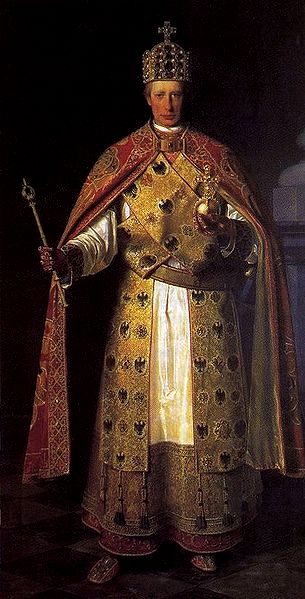



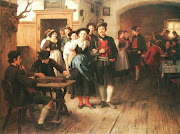


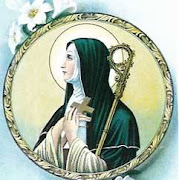
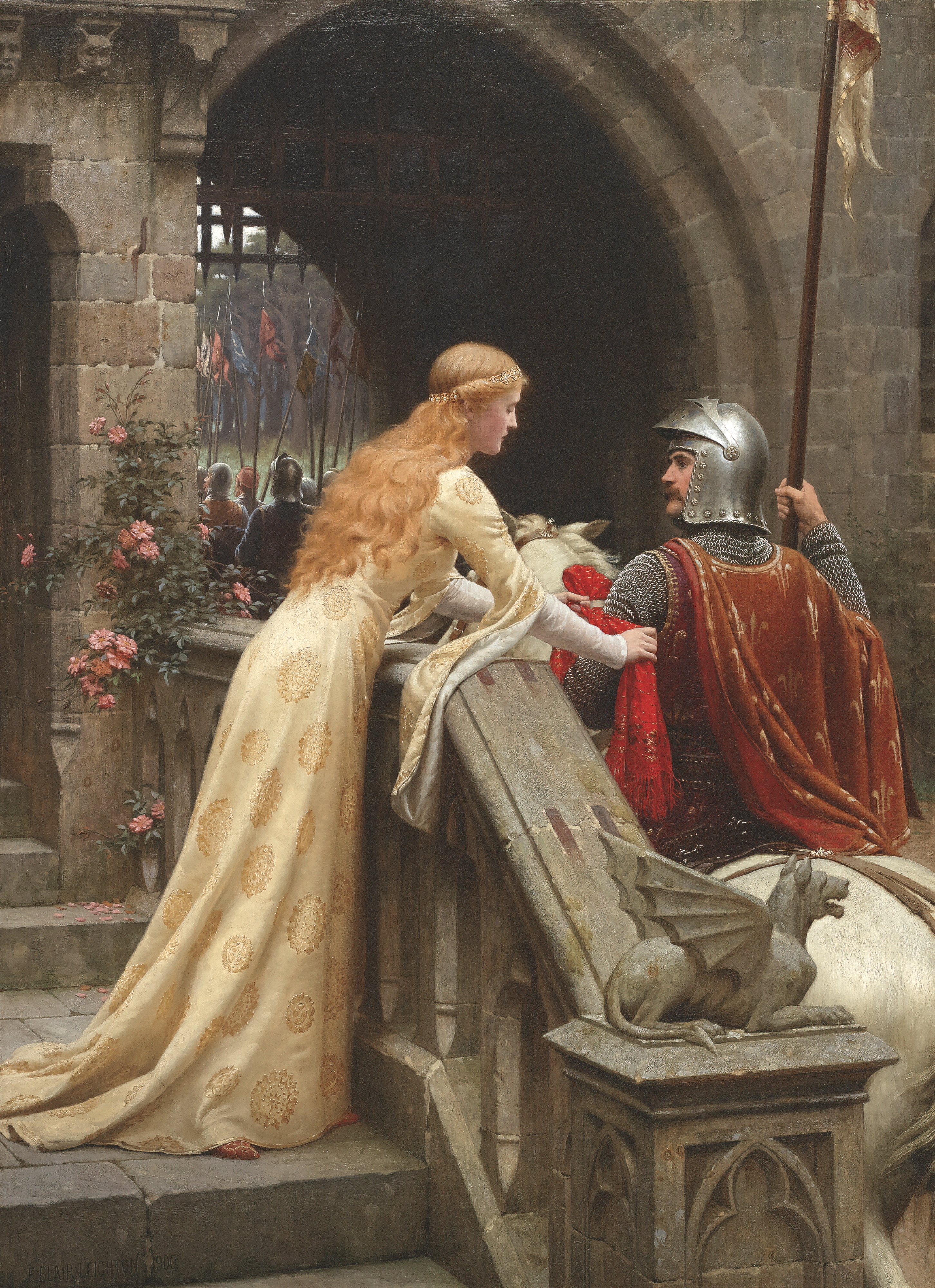

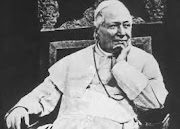






_-002.jpg/220px-Circle_of_Anton_Raphael_Mengs,_Henry_Benedict_Maria_Clement_Stuart,_Cardinal_York_(ca_1750)_-002.jpg)
